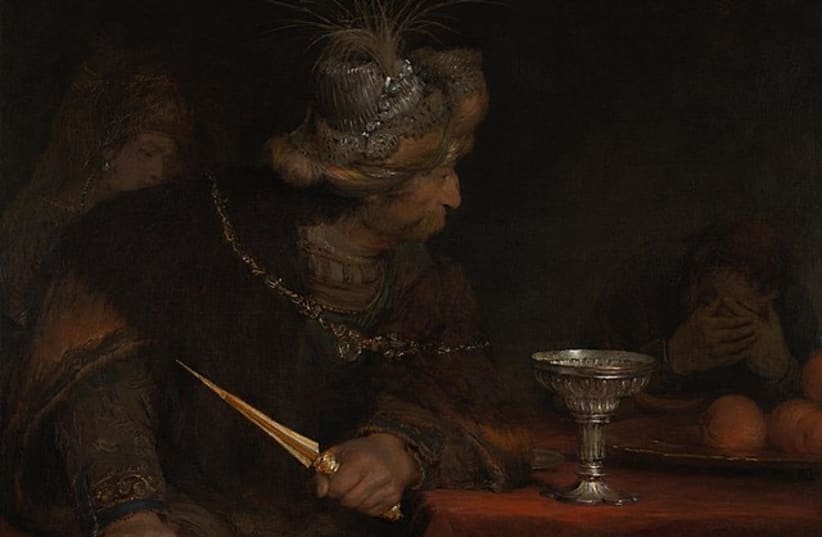Of all the characters mentioned in the story of Esther, the only one for which there is any historical record outside of the biblical text is King Ahasuerus, who most scholars today link to the Persian King Xerxes I.
Known by this Greek version of his name in the West, he was known in the east by the Persian version of his name, Khshayarsa. He was the grandson of Cyrus the Great who founded the Persian Achaemenid Empire and ruled from 485-465 BCE.
In addition to being featured in the story of Esther, a king named Ahasuerus is also mentioned in the books of Ezra and Daniel.
He was chosen by his father, Darius the Great, as his successor over his older brother Achaemenes because of his royal connection to Cyrus the Great through his mother Atossa. By the time Xerxes ascended to the throne, the Persian Empire was at the height of its might and reached from India down to Ethiopia and parts of Sudan – as in the story of Esther Ahasuerus is said to have ruled over 127 provinces from India (Hodu) to Kush, generally taken to be the Upper Nile Valley region.
The story of Esther would have taken place in the third year of Xerxes’ reign in 483 BCE, noted Dr. Yigal Bloch, curator of the Bible Lands Museum Jerusalem.
“This doesn’t mean the story is real, but it gives a chronological anchor for when it should have taken place,” he said.


Xerxes held several capital cities, including Susa, known as Shushan in the Bible, which served as the empire’s administrative capital and where he had a summer palace. But he is most famous for building up the city of Persepolis after a failed military campaign to conquer Greece. There, he started a lavish construction project to build a new palace and began work on a monumental Hall of a Hundred Columns.
It was in this city that the annual Persian New Year festival took place during the spring equinox with plenty of pageantry and splendor, similar to that described at the banquet in the story of Esther with soldiers, courtiers and subject people coming to greet the king and bring him gifts and offerings, noted Bloch. As he did with Esther, the king would extend his scepter to signal a favorable reception of gifts or people.
ON A LIMESTONE relief in the Bible Lands Museum from Persepolis of that period, two courtiers are depicted carrying provisions for a banquet, each in different costumes, indicating their different place of origin. One, from Persia, wears the usual trousers and ankle-length pleated robe and scarf wrapped several times around his head and chin, while the servant from Medea wears a round felt cap with a neck flap and chin strap and a tight, knee-length, long-sleeved leather tunic and trousers.
Indeed, said Bloch, it was common for people from the empire to serve as courtiers in the king’s court so Jews would have also easily been a part of that group, as Mordechai is described in the Purim story.
“All the splendor of the royal court [as described in the story of Esther] is true,” said Bloch. “Could there have been a Jewish courtier? Yes, there could have been.”
Xerxes was known for his drinking and lavish banquets, strong temper and enormous harem – the main wing of the harem building in Persepolis was excavated by a team from the Oriental Institute of the University of Chicago in the early 1930s. Royal intrigue with the king was also well documented, as he unsuccessfully pursued his brother’s wife, then fought an insurrection by his brother whom he killed, and then turned his attention to his niece.
The names of Xerxes’ main wives are known, said Bloch, and there is none recorded thought to be Esther, though of course, he added, one such name could have been among his secondary wives.
“Xerxes is particularly famous as an example of arrogance,” said Hebrew University of Jerusalem professor of Jewish history Daniel Schwartz. “When people want to tell a story of an arrogant ruler, they talk about Xerxes.”
These are typical stories of oriental despots that people like to tell, and which Greeks liked to tell about Persians, he added.
On his way to fight the Greeks, Xerxes had his forces build a bridge at Hellespont Strait between Greece and Turkey, today known as the Strait of Gallipoli, and when it was destroyed by the sea in a storm, he had the ocean whipped. Later, he had his men dig a canal through the base of the Mount Athos Peninsula in Greece as he made his way to battle, noted Schwartz. Today, though the canal itself has been covered up over time, its contours are still visible.
Despite having won some battles, Xerxes failed in the end to conquer Greece and in 479 BCE, after his governor Mardonius was defeated at the Battle of Plataea, his forces returned home.
In a podcast with the Jewish People Policy Institute promoting her 2020 book, Esther Unmasked, Dr. Thamar Eilam Gindin, a researcher at the University of Haifa’s Ezri Center for Iran and Persian Gulf Studies, noted that though the story of Esther is only documented in the Bible, a similar story is documented of the succession to the throne of Xerxes’ father, King Darius, including the danger of an imposter king wielding power.
